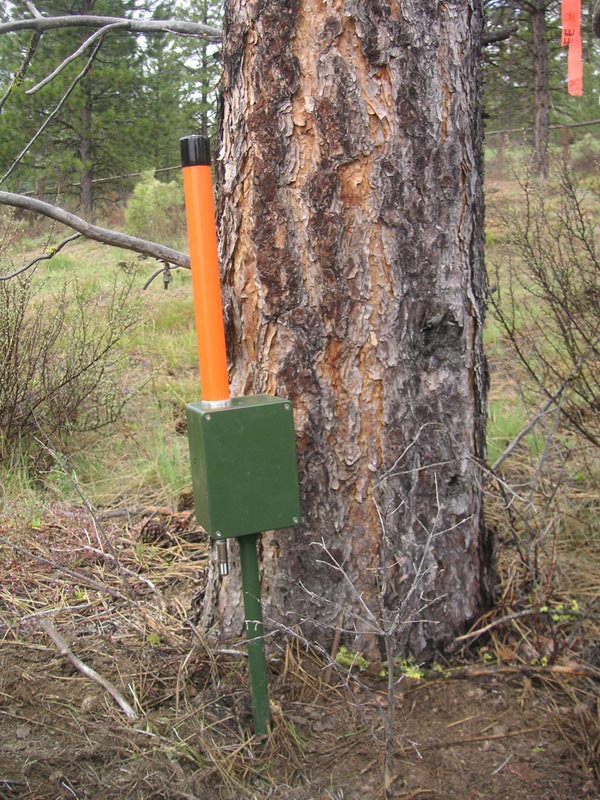When scientists and students from the Massachusetts Institute of Technology hammered a nail into a tree on campus and wired it to a metal rod in the ground, they confirmed Internet reports they had read about sustained voltage differences between various tree parts and the adjacent soil. Though they didn’t know why it happened, they suspected the system was acting like a giant potato battery. They were surprised, however, when the voltage continued to be measurable for days after the nail and rod were inserted.
What started as a lark has turned into a prototype of a maintenance-free network of sensors that might someday be used to detect forest wildfires. The network would be powered by the trees themselves.
MIT physicist Andreas Mershin and student Christopher Love recently published an explanation of the science behind the phenomenon, and they have joined with a new company, Voltree Power, to further develop the wireless network of sensors. Voltree’s plan is to harvest the electrical energy from the forest to continuously recharge a battery that will power the radio-equipped sensors. According to its website, the company’s Early Wildfire Alert Network (EWAN) will consist of “thousands of tiny humidity and temperature sensor nodes distributed over remote forestland. Each node contains a wireless transceiver that enables EWAN to instantly detect the onset of wildfires as well as continuously monitor forest conditions for accurate, ultra-high resolution, day-to-day, fire hazard prediction.”
While the forest monitoring idea isn’t new, earlier concepts have been hampered by the need for expensive solar systems or batteries that need regular replacement in hundreds of remote locations.
The MIT team says that the voltage difference between parts of trees and the soil is primarily due to the difference in pH between the two. The more acidic areas contain a greater concentration of positively charged hydrogen ions. The ions attract electrons, which results in the generation of a small current. The scientists measured sustained voltage differences of between 50 and 200 microvolts between the xylene region of a potted ficus tree and its soil, as well as between its cut branches and soil.
The bioenergy converter developed by Voltree harvests the metabolic energy from any tree without harming it, and the useful life of the device is only limited by the lifetime of the host. The system is resistant to the vagaries of weather, operates silently, and does not generate heat or noise.
In addition to a wildfire detection network, Voltree is developing applications for Homeland Security and border protection, remote environmental and agricultural sensing, and climate science research. And as MIT’s Mershin said, the amount of energy harvested from the forest is so small that the trees won’t feel a thing.


